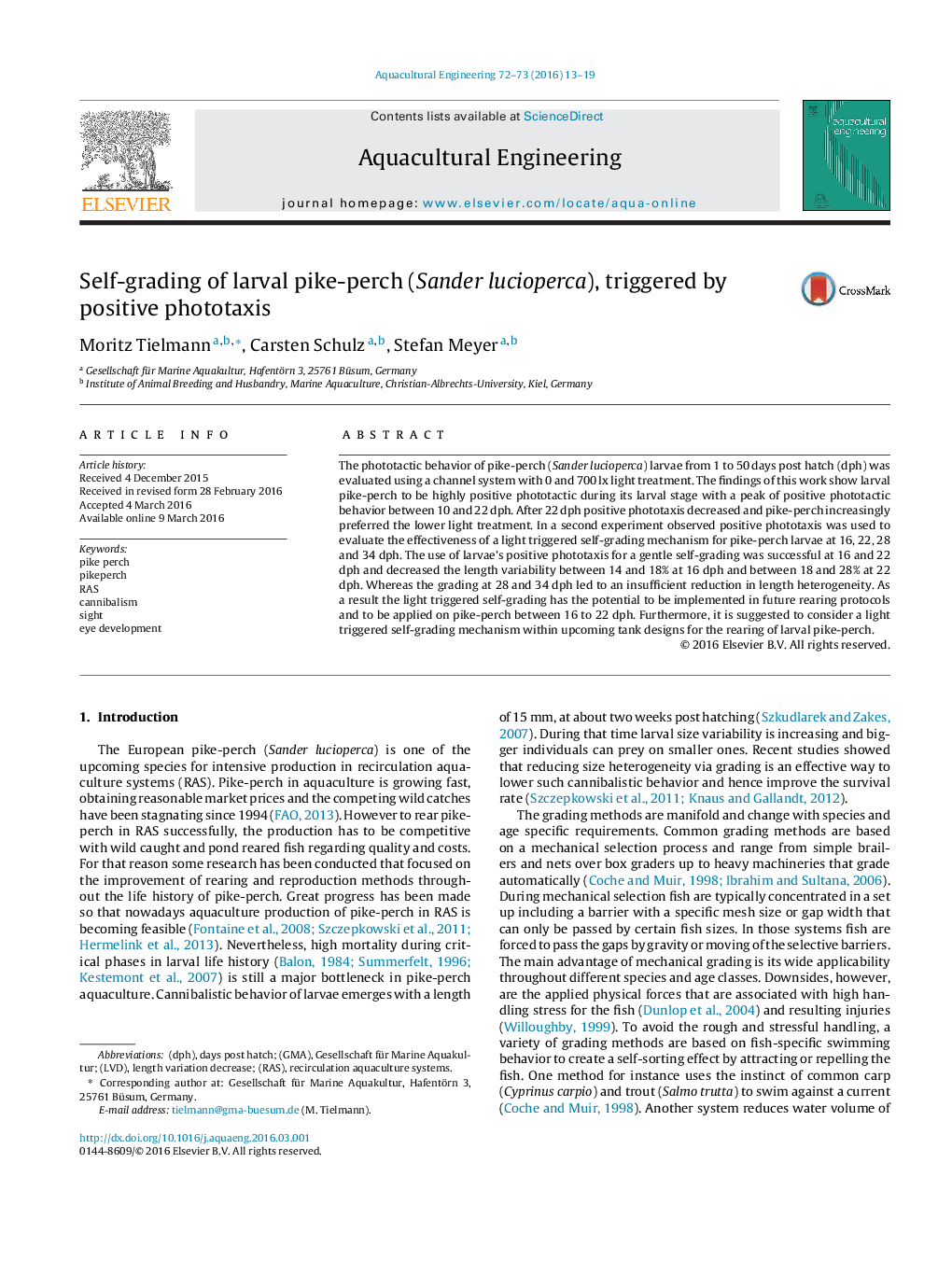| Article ID | Journal | Published Year | Pages | File Type |
|---|---|---|---|---|
| 4527117 | Aquacultural Engineering | 2016 | 7 Pages |
•Pike-perch decrease its positive phototactic behavior after 22 days post hatch.•Gentle size grading of pike-perch larvae with light as trigger is possible.•Self grading holds les stress and reduces cannibalism.•Implementing self grading in commercial tank design is desirable.
The phototactic behavior of pike-perch (Sander lucioperca) larvae from 1 to 50 days post hatch (dph) was evaluated using a channel system with 0 and 700 lx light treatment. The findings of this work show larval pike-perch to be highly positive phototactic during its larval stage with a peak of positive phototactic behavior between 10 and 22 dph. After 22 dph positive phototaxis decreased and pike-perch increasingly preferred the lower light treatment. In a second experiment observed positive phototaxis was used to evaluate the effectiveness of a light triggered self-grading mechanism for pike-perch larvae at 16, 22, 28 and 34 dph. The use of larvae’s positive phototaxis for a gentle self-grading was successful at 16 and 22 dph and decreased the length variability between 14 and 18% at 16 dph and between 18 and 28% at 22 dph. Whereas the grading at 28 and 34 dph led to an insufficient reduction in length heterogeneity. As a result the light triggered self-grading has the potential to be implemented in future rearing protocols and to be applied on pike-perch between 16 to 22 dph. Furthermore, it is suggested to consider a light triggered self-grading mechanism within upcoming tank designs for the rearing of larval pike-perch.
